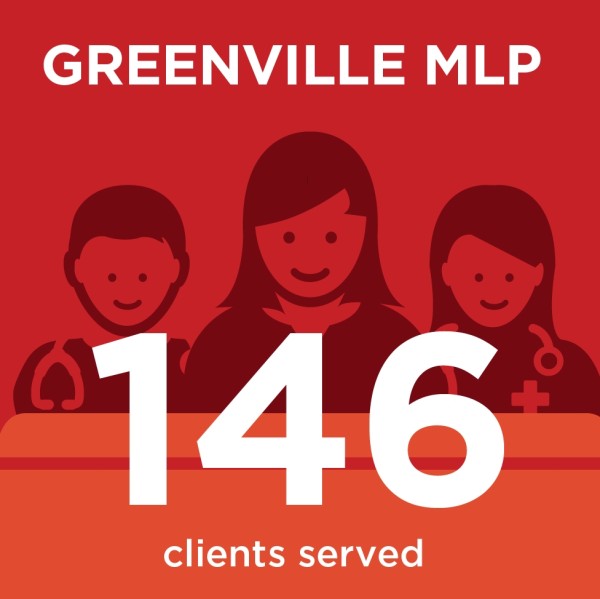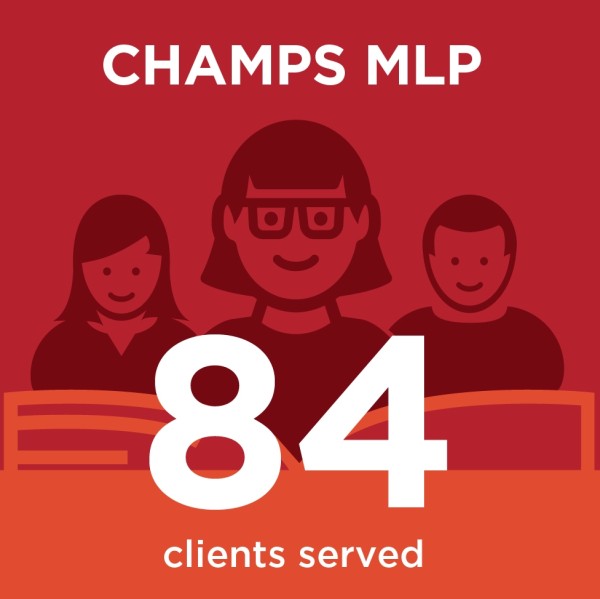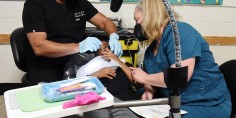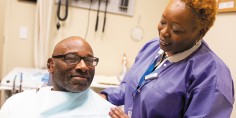Many disadvantaged families face socioeconomic barriers when it comes to health care. In South Carolina, a new statewide effort aims to tackle those challenges through medical-legal partnerships. The goal is to improve health outcomes and develop a model for other communities. Partners include the University of South Carolina Schools of Law and Medicine, Prisma Health, South Carolina Legal Services and Furman University.
7 Facts About… Breaking Barriers to Care through Medical-Legal Partnerships
Medical-legal Partnerships (MLPS)
$1 million grant supports 2 MLPs in South Carolina


1. The Basics
In medical-legal partnerships, known as MLPs, doctors and lawyers work together to address the underlying causes of poor health. The first MLP was founded in 1993 in Boston; they now exist in more than 330 health centers and hospitals in nearly every state.
The process begins at the doctor’s office, where screening questions cover housing, the availability of nutritious food, and other social and environmental determinants of health.
2. An Example
A recent white paper from the Institute for Child Success shares an example of a toddler living with cystic fibrosis in Greenville, S.C., who faced repeated hospitalizations because of breathing troubles and lung infections. After an MLP attorney challenged the family’s landlord, they were able to move from their mold-infested apartment — and the child’s breathing improved.
“What’s more,” says Eli Hestermann, executive director of Furman’s Institute for the Advancement of Community Health, “if we see 10 children with health problems and discover they all live in the same apartment complex, we can begin to think about policy-level changes. We’re not just bailing out the boat as it’s leaking, but patching it.”
The free legal services might also address access to government-provided benefits or guardianship issues.
3. The Impact
According to the National Center for Medical-Legal Partnerships, MLPs last year helped more than 75,000 patients resolve issues that were impeding their health. The center highlights five research-proven areas of impact:
- Patients with chronic illness are hospitalized less frequently
- Patients more often take medication as prescribed
- Patients report less stress and improved mental health
- Less money is spent on health care services for high-need patients who would typically go to the hospital; the use of preventative health care increases
- Clinical services are more frequently reimbursed by public and private payers
One study in the Journal of Asthma concluded that MLPs were “highly effective” in helping inner-city patients with asthma by improving their living situations. That study found a 90 percent decrease in emergency department visits for patients who received help from an MLP for a housing issue. A one-year pilot in Pennsylvania showed that 95 percent of high-need, high-use patients had two to three civil-legal needs each. Once those issues were fixed, inpatient and emergency department use dropped 50 percent.
Finally, a three-year study of a rural MLP showed a 319 percent return on investment for the hospital involved.
4. Connection Points
Supported by a $1 million grant from The Duke Endowment, the work in South Carolina connects two medical-legal partnerships in the state: CHAMPS (the University of South Carolina Schools of Law and Medicine, Prisma Health Children’s Hospital, and Palmetto Health-USC Medical Group) and the Greenville Medical-Legal Partnership (Prisma Health, South Carolina Legal Services and Furman University).
CHAMPS has a strong educational focus, giving law, medical and graduate-level social work students, as well as pediatric residents, the opportunity to work as part of the medical team on legal and social issues affecting children’s health. The Greenville MLP is focused more on providing legal services, and it serves geriatric patients in addition to children.
Furman is the country’s only undergraduate liberal arts school partnered with an MLP.
5. Gathering Insights
One objective of the new effort is to study how MLPs benefit communities by lowering health care costs and reducing health disparities. Another goal is to study — and share — how MLP models can work together.
Furman is taking the lead on evaluating health outcomes; USC is evaluating cost savings for the health system.
6. Serving Clients, Training Students
CHAMPS served 84 clients in 2019; the Greenville MLP served 146 clients. In addition, CHAMPS trained nine law students, four social work students, 30 pediatric residents, 32 Prisma pediatricians, and nine medical faculty.
As the work continues, the South Carolina collaborative is creating a blueprint for sharing resources, ideas and expertise to help MLPs across the country expand their reach while minimizing costs. Program leaders are creating a tracking system to evaluate outcomes, and they’re developing an interdisciplinary curriculum for use in schools of medicine, residency programs and undergraduate programs.
“We’re developing a model for this kind of collaboration across MLPs for other programs to use and follow,” says Emily Suski, an assistant professor at USC’s law school and CHAMPS director.
We’re developing a model for this kind of collaboration across MLPs for other programs to use and follow
7. Unique Opportunity
The Duke Endowment’s grant came through its Higher Education and Health Care program areas as part of an Endowment-wide emphasis on early childhood. The Endowment saw it as a unique opportunity to improve health outcomes for children and their families through a grant that also supports learning and education.
“Now that we know the long-term impacts of toxic stress and adverse childhood experiences on the developing brain, physicians must rethink the concept of preventive health,” says Dr. Kerry Sease of Prisma Health Children’s Hospital-Upstate, which helped pioneer MLPs in Greenville. “But routine screening for vulnerability is only useful if collaborative relationships exist to address these needs.
Related Posts

Atrium Health Foundation Receives Transformational Award from The Duke Endowment
July 14, 2025 | Atrium Health

Endowment Gives $2 Million to Advance New Project on Pluralism, Free Inquiry and Belonging
February 20, 2025 | Duke Chronicle






